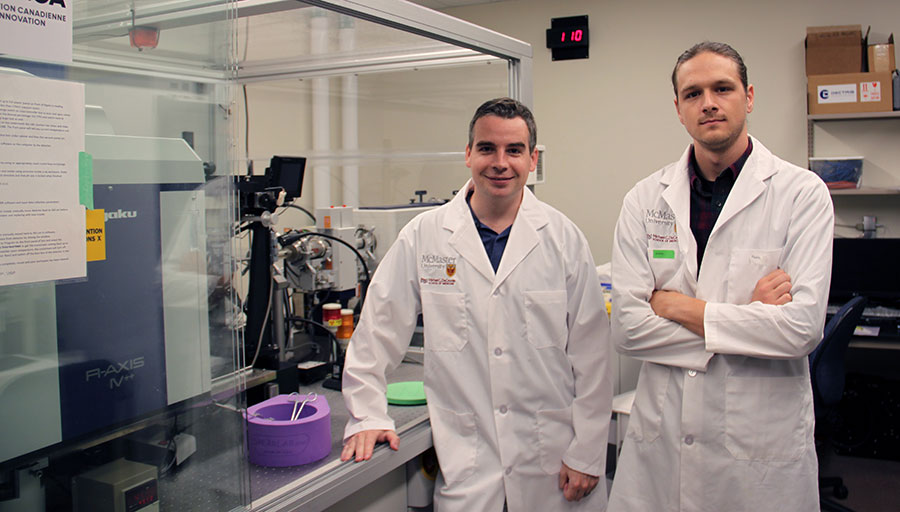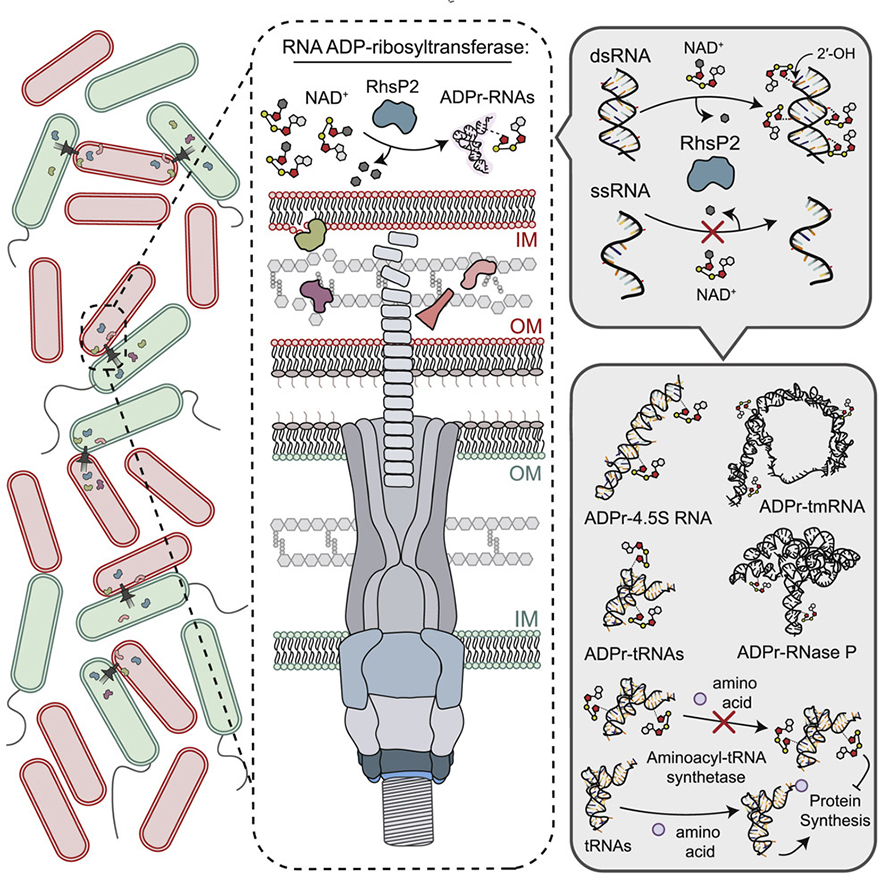Researchers discover toxin that kills bacteria in unprecedented ways
McMaster researchers have discovered a previously unknown bacteria-killing toxin that could pave the way for a new generation of antibiotics.
The study, led by John Whitney at the Michael G. DeGroote Institute for Infectious Disease Research, shows that the bacterial pathogen Pseudomonas aeruginosa, known to cause hospital-acquired infections such as pneumonia, secretes a toxin that has evolved to kill other species of bacteria.

For Whitney, the key aspect of his discovery is not just that this toxin kills bacteria, but how it does so.
“This research is significant, because it shows that the toxin targets essential RNA molecules of other bacteria, effectively rendering them non-functional,” says Whitney, an associate professor in the department of biochemistry and biomedical sciences.
“Like humans, bacteria require properly functioning RNA in order to live.”
First study author Nathan Bullen, a graduate student in biochemistry and biomedical sciences, describes it as “a total assault on the cell” because of the number of essential pathways depend on functional RNAs.
Whitney and Bullen, together with colleagues at Imperial College London and the University of Manitoba, have studied this toxin for nearly three years to understand exactly how it functions at a molecular level.

The breakthrough, published in the journal Molecular Cell, was achieved by Bullen after rigorous experimentation on common targets of toxins, such as protein and DNA molecules, before eventually testing the toxin against RNA.
This discovery breaks well-established precedents set by protein-targeting toxins secreted by other bacteria, such as those that cause cholera and diphtheria.
Researchers say that this development holds great potential for future research that could eventually lead to new innovations that combat infection-causing bacteria.
Whitney says future antibiotic development can build on the newly discovered vulnerability.
This article was republished with permission from the Institute for Infectious Disease Research at McMaster University. Read the original.
Enjoy reading ASBMB Today?
Become a member to receive the print edition four times a year and the digital edition monthly.
Learn moreGet the latest from ASBMB Today
Enter your email address, and we’ll send you a weekly email with recent articles, interviews and more.
Latest in Science
Science highlights or most popular articles

Bacteriophage protein could make queso fresco safer
Researchers characterized the structure and function of PlyP100, a bacteriophage protein that shows promise as a food-safe antimicrobial for preventing Listeria monocytogenes growth in fresh cheeses.

Building the blueprint to block HIV
Wesley Sundquist will present his work on the HIV capsid and revolutionary drug, Lenacapavir, at the ASBMB Annual Meeting, March 7–10, in Maryland.

Gut microbes hijack cancer pathway in high-fat diets
Researchers at the Feinstein Institutes for Medical Research found that a high-fat diet increases ammonia-producing bacteria in the gut microbiome of mice, which in turn disrupts TGF-β signaling and promotes colorectal cancer.

Mapping fentanyl’s cellular footprint
Using a new imaging method, researchers at State University of New York at Buffalo traced fentanyl’s effects inside brain immune cells, revealing how the drug alters lipid droplets, pointing to new paths for addiction diagnostics.

Designing life’s building blocks with AI
Tanja Kortemme, a professor at the University of California, San Francisco, will discuss her research using computational biology to engineer proteins at the 2026 ASBMB Annual Meeting.

Cholesterol as a novel biomarker for Fragile X syndrome
Researchers in Quebec identified lower levels of a brain cholesterol metabolite, 24-hydroxycholesterol, in patients with fragile X syndrome, a finding that could provide a simple blood-based biomarker for understanding and managing the condition.

